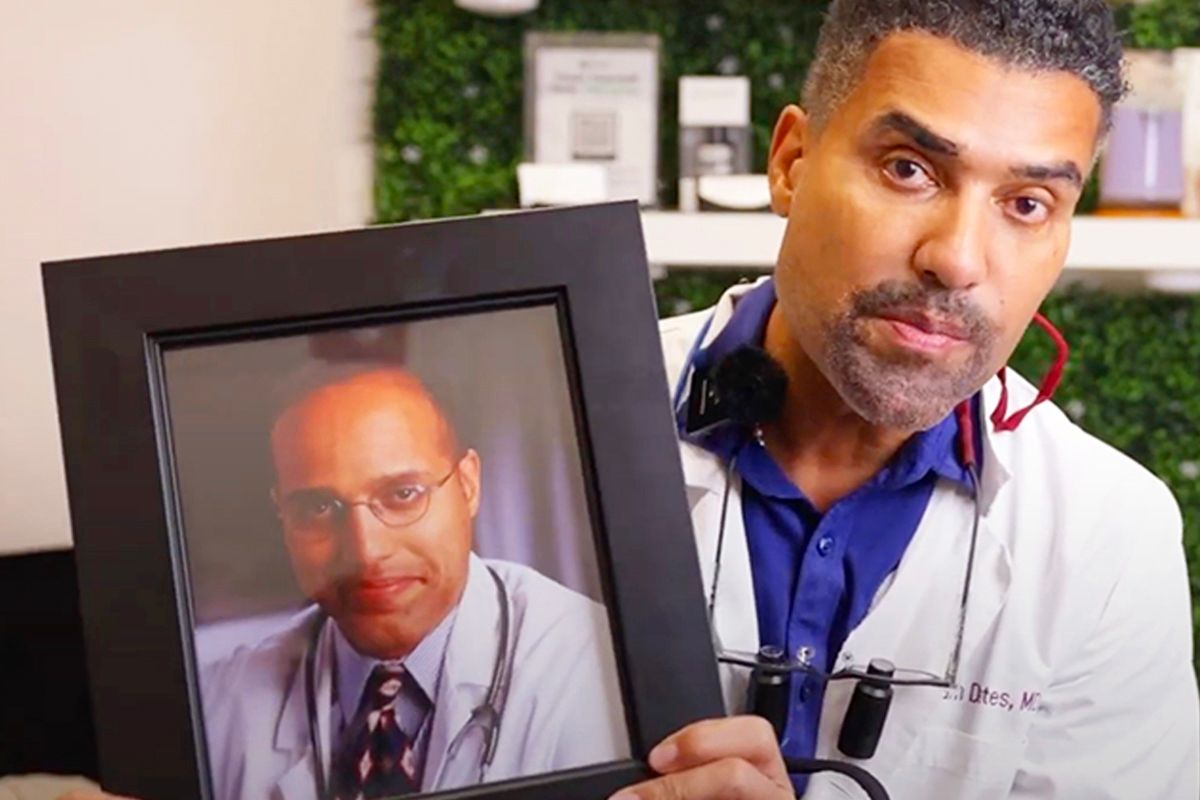



Hair loss is a common concern among men, and it can affect one's self-esteem and confidence. One of the most prevalent causes of patchy hair loss in men is male pattern baldness; also known as androgenetic alopecia. Genetics and other factors play a crucial role in determining a man's risk of developing male pattern hair loss.
There are several types of hair loss that men may experience:
Male pattern hair loss primarily has genetic roots. Family history plays a significant role. If your father or grandfather had hair loss, you are more likely to develop it because of shared genetic factors.
The androgen receptor gene (AR) plays a major role in male pattern baldness. According to several studies, variations in this gene can make some individuals more susceptible to hair loss. When this gene is sensitive to androgens, it can trigger the hair follicles to shrink and eventually stop producing new hair.
Androgens are a helpful tool for your body's development. Among other things, they help control the cycle of hair growth. If the androgens are overstimulated, your hair may start thinning.
Androgenic variations in several genes affect how your hair follicles will respond to Dihydrotestosterone (DHT). Over time, DHT shrinks hair follicles, causing them to produce finer and shorter hair until they eventually stop producing hair altogether.
Scientists identified a link between male pattern hair loss and several genetic variants. These variants, found in different regions of the genome, can increase the risk of baldness. This research shows the intricate genetics of male baldness and can help doctors determine if men carry the variant for hair loss earlier.
Traditionally, male pattern baldness manifests in thinning hair at the temples. This thinning progresses backwards up the scalp in an "M" shape. This is commonly seen as a noticeably receding hairline.
After first affecting the hairline, male pattern baldness usually progresses to a bald spot on the crown of the head. If left untreated, the thinning at the temples and bald spots will eventually meet and merge. There will usually be a horse-shoe shape of hair left over extending from the ears around the back of the scalp.
We need more research to effectively diagnose male pattern baldness. Thankfully, there are plenty of treatment options and hair restoration solutions to slow the rate of hair thinning in men:
Male pattern baldness is a lifelong condition, but it is manageable with the right treatment and care. The earlier you address the issue, the better the chances of preserving your hair. Beyond the physical effects, like a receding hairline and bald spots, permanent hair loss can also have emotional and psychological consequences. It can lead to reduced self-esteem and body image concerns, affecting a man's overall well-being and confidence.
Men and women can both suffer from androgenetic alopecia, although it is far more prevalent in men. Female pattern hair loss manifests a bit differently, with hair thinning towards the crown of the head. To learn more about hair restoration options for women, check out this article.
Going bald can be a distressing experience, but it is essential to remember that you are not alone. By learning about the causes and treatment options available, you can take proactive steps to manage hair loss.
There is plenty more information about hair restoration treatments and their side effects for you to explore here. Contact Dr. Yates to help create a personalized treatment plan to regain your confidence and maintain a healthy head of hair!



Ready to love your hair? Call 312.883.9617 for a consultation or fill out the form below
OUR LOCATION
213 N. Stetson Ave
Chicago, IL 60601
HOURS
Copyright ©2025 Dr. Yates Hair Science | All Rights Reserved
Powered by HEAVY LEVITY